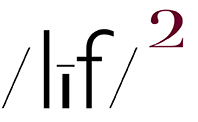“What we hope for from the artist is help in discovering the significance of a place. In this sense we would choose in most respects for thirty minutes with Edward Hopper’s painting Sunday Morning to thirty minutes on the street that was his subject; with Hopper’s vision we see more. “ ~ Robert Adams
I HAVE ALWAYS FOUND IT ANNOYING WHEN I READ A COMMENT that, in one fashion or another, links photography to painting. Re: Robert Adams’ statement - don’t know why he, a photographer, would use a painter’s work to illustrate a point that could be made equally well by using a photographer’s work to make the same point. As an example….
What we hope for from the artist is help in discovering the significance of a place. In this sense we would choose in most respects for thirty minutes with Stephen Shore’s photograph Beverly Boulevard and LaBrea Avenue to thirty minutes on the street that was his subject; with Shore’s vision we see more. - Robert Adams
That written, the point of this entry is not to belabor Adams’ choice of an artist’s work to make his point. Rather my point in this entry is to comment on Adam’s’ point.
Throughout the course of my picture making life, increasingly so as I have aged, is an awareness of the fact that I am very frequently unable to “be fully in the moment” when making a picture. That is, to be more exact , that, when I encounter something that pricks my eye and sensibilities, my reaction is to make a picture as opposed to “being in the moment”, i.e. pausing to contemplate and appreciate that which caught my attention. In most cases, I make a picture and move on.
It is only when I have in hand the result of a picture making moment-a print-that I am able to more fully contemplate and appreciate what it was that pricked my eye and sensibilities in the picture making moment. And, it is worth noting that I can can contemplate and appreciate the depiction / representation-if not the actuality-of what I pictured for an extended period of time over an extended period of time (that is, time and time again).
In other words, I would choose in most respects for thirty minutes with one of my photographs to thirty minutes in the place where I viewed my subject; with the printed manifestation of my vision I see more.
I attribute my manner of delayed contemplation and appreciation to the fact that the medium of photography and its apparatus extract a precise moment in time-described and defined by a precise frame imposed by the picture maker-from the on-going flow of time. That moment is isolated, aka: “frozen”, on the 2D surface of a photographic print where it can contemplated and appreciated for as long as a viewer chooses to view it, without the “distraction” of the flow of time.
FYI, while my contemplation and appreciation of my pictures-and those made by others-are influenced by my appreciation of the form found in a picture, a visual experience, I also appreciate the potential derivation to be had of the feeling of being there. That is, the feeling of pleasure and surprise of discovering subtle beauty in the most simple and unlikely places and things.
